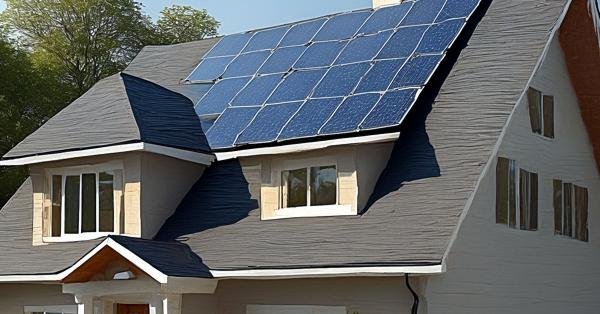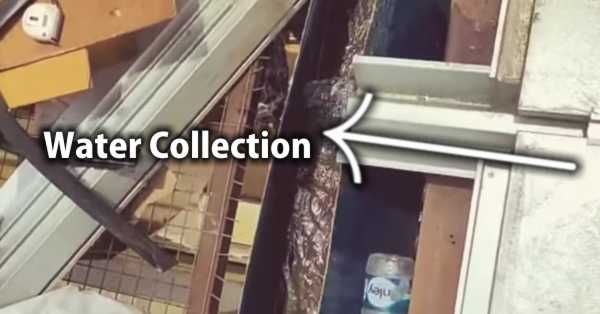Choosing the Best Roof Material for Solar Panels
With more than 25 years of involvement in the field, I have had the chance to participate in several ventures that encompassed solar photovoltaic (PV) systems merging with different roofing materials as a certified civil engineer and construction expert. During my professional life, I have come to understand various issues around the ideal choice for roof material which should be supportive of solar technology.
Here, I will share my expertise and insights to assist property owners, contractors and design professionals in maneuvering through the selection of the right roofing material for their solar PV systems. I will give you an understanding of what should be considered most during the decision-making process, what types of roofs are available and how they can be properly mounted so that both the roof and solar array perform at their best over time.
Best Roof Material for Solar Panels
Asphalt Shingles
Asphalt shingle is a widely used and popular material for the roof, which can also be suitable in some cases for solar PV applications. These types of shingles are relatively lightweight, cost-effective, and come in various styles and colors which make them more versatile.

Advantages:
Easily found
Lightweight thus simplifies the installation of solar panels
The ability to select several different styles that suit a solar array.
Disadvantages:

A shorter lifespan compared to other roofing materials.
May be incompatible with some solar PV mounting systems
Vulnerable when it comes to hailstones or heavy weather conditions
Standing Seam Metal Roofing
The standing seam metal roofing is one of the choices for solar PV as it has high strength, long service life, and goes well with most solar mounting systems. The raised seams and secure attachment methods provide a stable and reliable foundation for the solar array.

Advantages:
Long-term use and hardiness
Compatibility with many types of solar panel mounts
Various looks including color options and profiles
No fire danger

Disadvantages:
Costs are higher than other roofs in the initial stage.
Increased noise transmission during heavy rain or hail events may be possible.
It might involve specialized installation knowledge
Tile Roofing
Tile roofs especially those made of clay or concrete can be used where there is a need to complement architectural styles found in regions with Mediterranean or Spanish influences.

Advantages:
Strong enough to last an extended period
Incombustible; not prone to burning up by fire outbreaks
Various designs that would match a building’s look
Good thermal mass properties that enhance energy conservation
Disadvantages:
Heavy hence needing strong reinforcement structures
Might not work well with all types of mounts for Solar PVs
Complexity in doing this as it may require additional laborers’ effort.
Flat or Low-Slope Roofing
Solar photovoltaic systems are commonly installed on commercial roofs that are flat or low-sloping, including modified bitumen, single-ply membranes, and built-up roofing.
Advantages:
Can be used in different designs
Works with almost all solar PV mounting systems
It can allow for HVAC units or footpaths on the rooftop
They can accommodate the installation of large-scale solar PVs in commercial or industrial buildings.
Disadvantages:
Poor design and maintenance may lead to water collection and leakages
Need specialized installation skills as well as expertise.
Exposure to weathering and UV light leads to faster material damage due to excessive heat.
Specialized Solar Roofing Materials
In recent years, there has been a growing market for roofing materials that are specifically designed and engineered for integration with solar PV systems. Many of such products come equipped with mounting points integrated within them, enhanced weatherproofing abilities and more compatibility features with other equipment used in conjunction with solar components.
Advantages:
Optimized for seamless solar PV integration
Streamlined installation process
Improved long-term performance and compatibility
Higher energy efficiency levels thereby promoting sustainability.
Disadvantages:
Mostly costs more at first glance if compared with traditional housetops.
Not so many companies produce it and not commonly found everywhere too
Might involve some special means of fixing it up securely.
Best Roof Design Practices Based on My Expertise:
Roof Pitch and Orientation Design:
Evaluate the pitch and orientation of your roof to ensure it is suitable for solar panel installation. Optimal roof pitch typically ranges from 15 to 40 degrees, and the roof should be oriented within 30 degrees of true south for maximum efficiency.

Roof Material Compatibility:
Choose a roofing material that is compatible with solar panel installation. Some of the best options include asphalt shingles, metal roofing, and tile roofing. Avoid materials that may be difficult to work with, such as thatch or wood shake.
Roof Age and Condition:
Assess the age and condition of your roof. It’s generally recommended to install solar panels on a roof that is less than 10 years old and in good condition. Replacing an older roof before installing solar panels can help ensure the longevity of both systems.
Roof Strength and Load-Bearing Capacity:
Ensure that your roof has the structural integrity to support the weight of the solar panels, mounting hardware, and any additional snow or wind loads. Consult a structural engineer if you have concerns about the load-bearing capacity of your roof.
Roof Access and Ease of Installation:
Consider the accessibility and ease of installation for the solar panels. Roofs with fewer obstructions, such as chimneys or dormers, and easier access for the installation crew can simplify the process and reduce overall costs.

Roof Warranty and Lifespan:
Choose a roofing material that has a long lifespan and a warranty that aligns with the expected lifespan of your solar panel system, typically around 25 to 30 years.
Energy Efficiency and Reflectivity:
Opt for a roofing material that has a high energy efficiency rating and low reflectivity, as this can help improve the performance of your solar panels.
Local Building Codes and Regulations:
Familiarize yourself with any local building codes or regulations that may impact the choice of roof material for solar panel installation. Ensure that your selection complies with these requirements.
Aesthetics and Curb Appeal:
While functionality should be the primary concern, consider the aesthetic appeal of the roof material and how it will complement the overall design of your home or building.

Case Studies
As a licensed civil engineer and construction specialist with over 25 years of experience, I’ve had the privilege of working on numerous solar panel installations across the United States. Here are four real-life case studies that highlight the importance of choosing the best roof material for solar panels.
Asphalt Shingles in Arizona
I worked on a residential solar panel installation project in Phoenix, Arizona, where the homeowner had an asphalt shingle roof. The roof was in good condition, and the pitch and orientation were ideal for solar panels.
However, during the assessment, I noticed that the asphalt shingles were thinner and less durable than the recommended specifications for solar panel installations. To ensure the long-term viability of the system, I advised the homeowner to consider upgrading to a more robust asphalt shingle or a metal roofing system, which would provide better support and protection for the solar panels.
Metal Roofing in Wisconsin
In a project in Milwaukee, Wisconsin, I worked with a commercial building owner who had a standing-seam metal roof. The metal roof was an excellent choice for the solar panel installation, as it is highly durable, fire-resistant, and can withstand the harsh Midwest weather conditions. Moreover, the metal roof’s reflective properties helped improve the solar panels’ efficiency by reducing heat absorption. If you have a metal roof, you can rest assured that it is an excellent choice for supporting a solar power system.
Tile Roofing in California
I recently completed a solar panel installation project on a Surf & Sand Resort in Laguna Beach, California, where the resort owner had a tile roof. Tile roofs can be an excellent option for solar panels, as they are long-lasting and have unique design features that can complement the solar panels’ aesthetic. However, I needed to carefully assess the tile roof’s structural integrity to ensure it could support the additional weight of the solar panels and mounting hardware. After a thorough evaluation, I recommended specific reinforcement measures to maintain the roof’s structural stability and the solar panel system’s performance.
Flat Roof in New York
In New York City, I worked on a commercial project (La Parisienne) at 9 Maiden Ln, New York, NY 10038, United States with a flat roof. Flat roofs can present unique challenges for solar panel installations, as they require specialized mounting systems and additional considerations for drainage and weatherproofing. To ensure the success of this project, I carefully evaluated the roof’s condition, load-bearing capacity, and drainage systems. Based on my assessment, I recommended a ballasted solar panel mounting system that would distribute the weight evenly and maintain the roof’s waterproofing integrity. This approach allowed us to maximize the solar panel coverage while safeguarding the building’s structural and weatherproofing performance.
The Importance of Roof Material Selection for Solar PV Systems
The selection of the right roof material is a critical factor in the successful integration and long-term performance of a solar PV system. The roof serves as the foundation for the solar array, providing the necessary structural support, weatherproofing, and compatibility to ensure the system functions at its best.
Structural Integrity and Load-Bearing Capacity
The roof must be capable of safely supporting the additional weight of the solar panels, mounting hardware, and any other associated components. Improper roof selection can lead to structural issues, compromising the safety and stability of the entire system.
Weatherproofing and Durability
The roof material must be able to withstand the elements, including wind, rain, snow, and UV radiation, without compromising the integrity of the solar PV system or the building itself. Roof leaks, moisture intrusion, or material degradation can have devastating consequences for both the solar array and the structure it’s installed upon.
Long-Term Compatibility and Performance
The selected roof material must be compatible with the solar PV system’s mounting requirements and able to accommodate the system’s long-term thermal and physical movements without creating issues like panel misalignment or damage.
By carefully evaluating these critical factors, property owners and design professionals can ensure that the chosen roof material provides a solid, reliable, and long-lasting foundation for their solar energy investment.
Budget and Life-Cycle Cost Considerations
While the initial cost of the roof material is an important factor, it’s crucial to take a broader, life-cycle approach when evaluating the overall investment. The long-term maintenance, repair, and replacement costs, as well as any potential energy savings or other financial benefits, should all be factored into the decision-making process.
Long-Term Cost Formula:
Long-Term Cost = (Annual Maintenance Cost × System Lifespan) + (Repair Cost × Frequency of Repairs) + (Replacement Cost × Frequency of Replacements)
Where:
- Annual Maintenance Cost: The estimated yearly cost for maintaining the roofing material and the solar panel system, including cleaning, inspections, and minor repairs.
- System Lifespan: The expected lifespan of the solar panel system, is typically around 25-30 years.
- Repair Cost: The estimated cost for any major repairs or replacements of the roofing material or solar panel components during the system’s lifespan.
- Frequency of Repairs: The anticipated number of times major repairs will be required over the system’s lifespan.
- Replacement Cost: The estimated cost for replacing the roofing material or solar panel system at the end of their respective lifespans.
- Frequency of Replacements: The anticipated number of times the roofing material or solar panel system will need to be replaced during the overall system’s lifespan.
